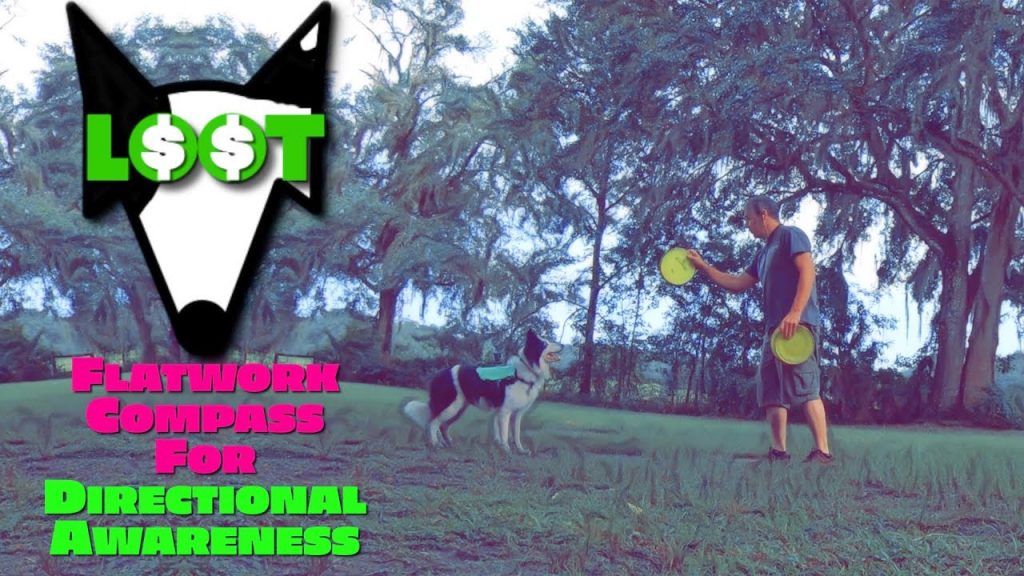
The Flatwork Compass – Creating a Sense of Direction Part 3 | Learn How to Follow the Leader
This is the third piece in a series on the Flatwork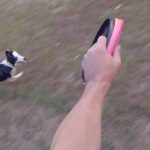 Flatwork is the stuff that happens between the catches. How the team moves and transitions, often without the disc, is flatwork. Flatwork concepts in disc dog are taken from the agility and herding... More Compasss – Creating a Sense of Direction. Part 1: Clock & Counter and Part 2: Separating the Flank from the Pass.
Flatwork is the stuff that happens between the catches. How the team moves and transitions, often without the disc, is flatwork. Flatwork concepts in disc dog are taken from the agility and herding... More Compasss – Creating a Sense of Direction. Part 1: Clock & Counter and Part 2: Separating the Flank from the Pass.
Follow the Leader is a great game. It’s fun. But following a leader that is a prey driven animal might lead you to places you don’t want to be. Follow the Leader with a leader who is not aware of the follower’s ability to follow breaks down right away. Follow the leader is best played when we know who the leader is and when we get some good cues as to where the game is going to go.
Who Is the Leader?
Who is leading your game? Honest answer…
It is not uncommon for the dog to be taking the lead in the game of disc. It is also not uncommon for the dog to actually take that lead away from the handler. And fighting over control of who is leading the game is a common situation for many if not most disc dog teams.
Fighting over who leads the game is super frustrating for both dog and handler, and it shorts us in the team department. There is no need to fight over this.
The Flatwork Compass The Flatwork Compass is a disc dog form that separates the Flank from the Pass, creates a reliable trigger, and exposes the team to all of the key elements of Team Movement. https://www.youtube.com/watch?v=xW7Czz-7ows&list=PL8zWXaJfi1-synGOkBJ7u4p-WkotsL3LR... More is a clear and concise framework that delivers some very solid tools for teaching your dog to follow the leader.
The Flatwork Compass is a disc dog form that separates the Flank from the Pass, creates a reliable trigger, and exposes the team to all of the key elements of Team Movement. https://www.youtube.com/watch?v=xW7Czz-7ows&list=PL8zWXaJfi1-synGOkBJ7u4p-WkotsL3LR... More is a clear and concise framework that delivers some very solid tools for teaching your dog to follow the leader.
Where Are We Going?
Lots of handlers point around on the field, like with their fingers or a disc. This may or may not be communicating where we are going to the dog. Odds are it is the handler’s foot position or the angle of the body that is physically telling the dog where to go. And a reliable pattern and reward placement can teach anyone where the action is going to happen – eventually.
The Flatwork Compass creates very simple rules for where we are going. Pushing forward and out means Flank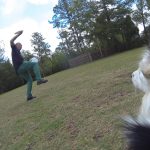 Out to the side of the handler is the Flank. If the dog is out to the handler's right or left the dog is on Flank. If the dog is moving with the... More in the direction I’m pushing. Switching stances and opening up means we’re going in the direction I’m opening up. Even before the movement, the stances having been experienced in drop dead simple fashion communicate where we are going.
Out to the side of the handler is the Flank. If the dog is out to the handler's right or left the dog is on Flank. If the dog is moving with the... More in the direction I’m pushing. Switching stances and opening up means we’re going in the direction I’m opening up. Even before the movement, the stances having been experienced in drop dead simple fashion communicate where we are going.
The Flatwork Compass is a terrific tool for teaching dog, handler, and team how to communicate where we’re going and how to make the catch happen there.
When Are We Going?
Lots of disc dogs are happy to follow the leader. Right up until the disc is gonna be thrown and then it’s,”Ooh, ooh! I know, I know! I’m gonna put myself right where you’re gonna throw it!”
This idea of “when” can be one of the worst problems of all. Everything is fine right up until I… and the dog takes the lead!
The simple framework of the Flatwork Compass provides a situation where it is easy to ensure that the dog doesn’t go before the throw. All you have to do is wait.
Shuffle the feet… Present the throwing pose… and do nothing. If the dog goes, don’t throw. Adjust the timing on your delivery on each throw and hold the throw if the dog goes and your dog will learn to both follow the leader and when we’re supposed to go.
I’ll Wait
The Flatwork Compass framework teaches the dog to wait for the disc to leave the handler’s hands before moving. It teaches the dog that the feet or the backswing are not the Go cue. When the handler sets up for the throw, the dog looks at the handler’s feet and waits for them to commit to a move, “Flank or Pass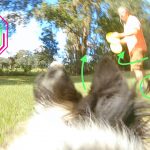 A Pass or Passing is a linear Team Movement maneuver that has the dog running or moving past the handler in close proximity, crossing or breaking the plane of the handler's body., lady, the choice is yours…”
A Pass or Passing is a linear Team Movement maneuver that has the dog running or moving past the handler in close proximity, crossing or breaking the plane of the handler's body., lady, the choice is yours…”
Once the feet shift, the dog knows the direction, but also knows that some weird throw might come out or the handler will withhold the throw if the dog bolts. So the dog plays it cool, takes the throwing pose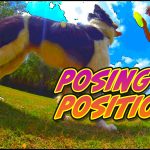 Posing is a communication tool for throwing discs to dogs (or people). A pose is a frozen moment of a throw; a key moment of the backswing perhaps, or a flashy presentation of... More, and stays on task until the disc is released from the hand.
Posing is a communication tool for throwing discs to dogs (or people). A pose is a frozen moment of a throw; a key moment of the backswing perhaps, or a flashy presentation of... More, and stays on task until the disc is released from the hand.
Just like the Flatwork Compass.
I’ll Watch
So many dogs can’t see past the disc. Looking to and looking at the handler is a great skill. Looking to and at the handler for physical movement cues is even better.
The more your dog studies your movements, the more they know about how and where we’re going to go. Now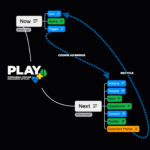 The Now Phase is an integral part of the Play Cycle in the Play+ training philosophy. It embodies the current, immediate interaction between the handler and the dog, anchoring them in the present... More waiting becomes an easy game because a dog can trust what she can see with her own eyes.
The Now Phase is an integral part of the Play Cycle in the Play+ training philosophy. It embodies the current, immediate interaction between the handler and the dog, anchoring them in the present... More waiting becomes an easy game because a dog can trust what she can see with her own eyes.
And besides, anyone can see that your the leader.
I’ll Know
The number of things a dog will know from working the Flatwork Compass are too numerous to mention. But the key here is that the dog will know. And this is different than,”I think we’re gonna go that way.” or “I think this is a Pass…”
Teaching your dog the signals and movements for all four directions – clock and counter / flank and pass – means that she knows what to look for. She knows how it works.
This is so very different from freestyle jamming and figuring it out or teaching only the skills used for your routine.
Having a dog that knows where to go and when we’re going is nice, but having a dog who knows those things and knows that the handler is the leader? That is a dream.







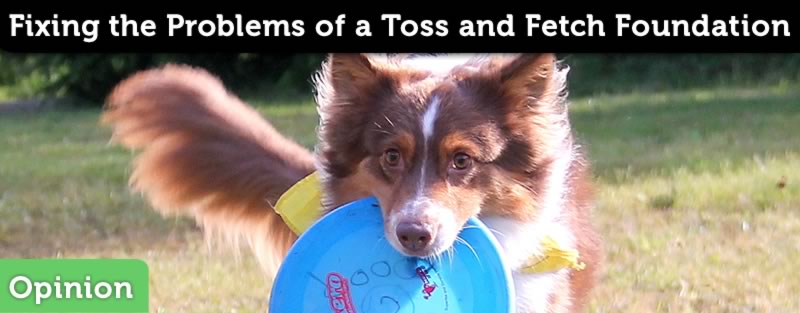
Responses